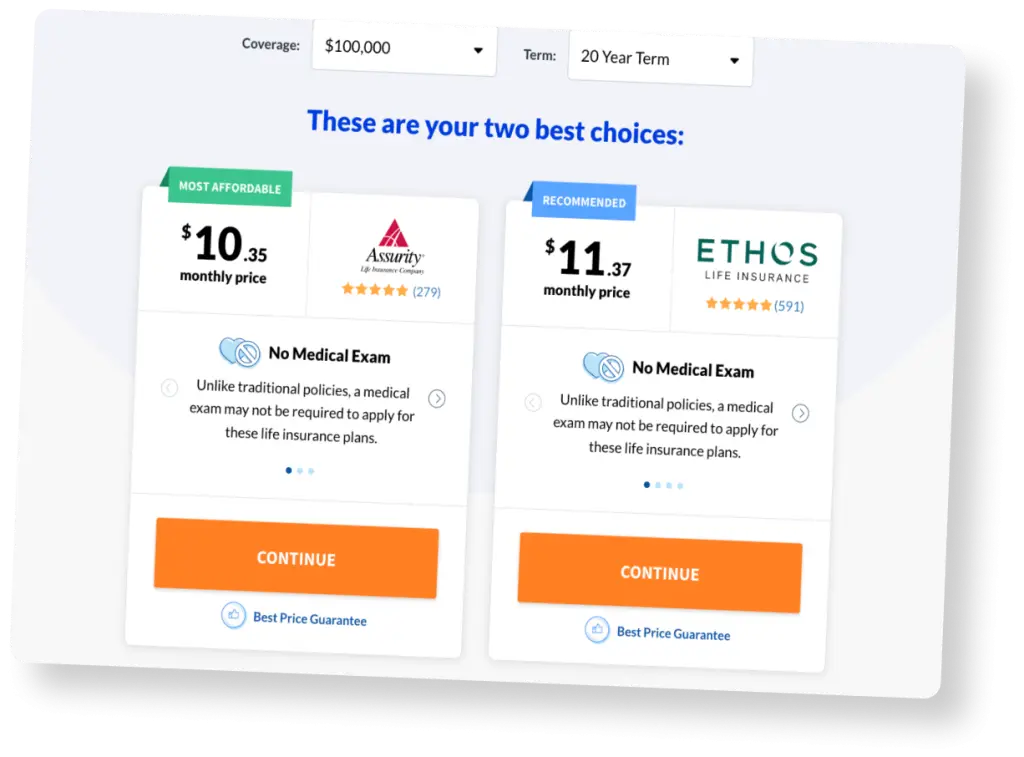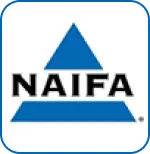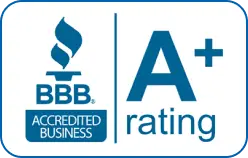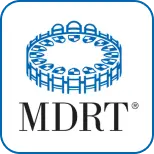Choosing the right life insurance policy is about more than just comparing ratings, it’s about aligning your life insurance plan with your long-term goals. Whether you’re evaluating whole life insurance, term life insurance, or more flexible options like variable universal policies, your decision should reflect how much life insurance you need to protect your financial future. The life insurance policy you choose depends on several factors: how much coverage you want, your current income, family needs, and how premium payments fit into your financial planning.
Comparing life insurance cost and life insurance rates across providers and companies ensures you’re not only getting strong life insurance coverage but also a smoother customer experience. Look closely at policy details, and use online quotes or tools to estimate coverage amounts and death benefit payouts.
Key Takeaways of Complete Ratings Guide For Life Insurance Companies
Independent rating agencies like AM Best, Moody’s, Fitch, and S&P assess an insurer’s financial strength, risk management, and ability to pay claims, crucial factors for long-term policy reliability.
Financial strength ratings are not guarantees but offer a useful benchmark to compare insurers; the Comdex score helps simplify this comparison by averaging all major ratings into a single 1–100 scale.
AM Best specializes in the insurance sector and remains the most referenced rating agency, while Fitch and Moody’s focus more on credit risk and bond analysis, respectively.
Comdex reports allow consumers to compare up to eight life insurance companies at once, offering transparency and detailed score interpretation through platforms like VitalSigns.
Beyond ratings, policyholders should also weigh customer service, specific product offerings, and premium affordability when selecting a life insurance provider.
Understanding Life Insurance Ratings
When it comes to buying life insurance, there are many key factors you must consider. Two of the most important considerations are the financial strength of the insurer and its ability to pay the claim. That’s where independent rating agencies come in.
Like health scores in the restaurant industry, insurance ratings evaluate overall product and company trustworthiness. Independent rating agencies like AM Best, Fitch, and Moody’s asses the financial strength and stability of an insurance company, as well as its ability to meet financial obligations. Typically, financial strength is determined by financial performance, company management, and business profile. Most agencies use an alphabetic rating scale, with A being the strongest rating. Now it must be stated that these independent ratings reflect the opinions of rating agencies and are not implied warranties of the insurer’s ability to meet contractual obligations.
Even though these ratings do not come with a guarantee, independent insurance ratings are valuable first-step resources on your insurance journey. The main thing is you want a reliable company handling your policy. Paying premiums means nothing if the insurer can’t pay the claim. That is why independent rating agencies are important.
This article will give you a comprehensive overview of everything you need to know about these independent rating agencies, how to use insurance ratings to choose the best life insurance company for you, and where insurance companies we use measure up.
What Do Life Insurance Company Ratings Mean?
Independent rating agencies take a holistic approach to life insurance company evaluations. It doesn’t take an expert to know that Banner Life’s A+ Financial Strength Rating (FSR) from AM Best is excellent, but how does the agency determine which life insurance companies are A++ and which companies didn’t even show up for the test?
Common insurance rating factors:
- Financial performance
- Management and business portfolio
- Claims-paying ability
Financial Performance
This is the primary metric most rating agencies will use to assess a life insurance company’s overall strength. Balance sheets, income statements, and cash on hand are all used to determine a company’s financial health. Most insurance companies rely on fixed investments such as bonds and other low-risk securities.
The quality of the insurance company’s investment portfolio is a major part of its overall stability. For example, a company’s ability to maintain profitability in a low-interest rate environment is an excellent indicator of the quality of the company. Company assets, liabilities, and profitability all help paint a picture of how strong the company has been and how well it is expected to do moving forward.
Risk Management & Business Portfolio
Rating agencies, like Moody’s, will distill a life insurance company’s portfolio from its overall business model down to its procedures for handling underwriting and claims. Managing these risks is equally as important as any financial investment. Other factors include a company’s market positioning and its product diversity.
In other words, where is the company’s competitive advantage? Does the company mainly write policies for high-risk individuals, or do they cast a wider net? These factors all highlight an insurance company’s management acumen and competitiveness in the marketplace. On top of that, rating determinations include buy-outs, a change in leadership, and new products on the horizon.
Claims-Paying Ability
A life insurance company’s ability to pay your claim is the most important factor on every policyholder’s mind. Claims are the crux of what insurance is all about, and you want to be confident that your insurer can meet its financial obligations. Two things are important to determine the claims-paying ability of any company: reinsurance agreements and reserve requirements.
Reinsurance is the process of insurance companies transferring some or all of the risk they assume under their insurance policies to another insurance company. Essentially, the original insurance company cedes a portion of its risk to the reinsurer in exchange for a portion of the premium paid by the policyholder. This transfer of risk helps life insurance companies manage the financial impact of large claims or multiple claims occurring at once. It also allows them to underwrite more policies and expand their product offerings. By spreading the risk of loss among multiple companies, reinsurance helps ensure the stability and solvency of the overall insurance marketplace.
It is our observation that no legitimate life insurance claim will go unpaid. The ability to pay claims is paramount to the continued integrity of the insurance industry in general.
trusted by 5,000+ clients
Compare Life insurance Rates
See rates and benefits tailored to your business needs.
Who Rates Life Insurance Companies?
- AM Best
- Fitch Ratings
- Moody’s
- Standard & Poor’s (S&P)
- Comdex
While all independent rating agencies scour the same data, each has its own methodology for evaluating a life insurance company’s financial strength and stability. The rank chart below gives an approximate view of how each agency’s rating system relates to the others. If you find an insurer has wildly different ratings from one rating agency to another, it is important to dig deeper into the cause. Each agency has its own review process, and one rating agency may have a more up-to-date assessment than the others.
Rank | A.M. Best | Standard & Poor’s | Moody’s | Fitch Ratings |
1 | A++ | AAA | Aaa | AAA |
2 | A+ | AA+ | Aa1 | AA+ |
3 | A | AA | Aa2 | AA |
4 | A- | AA- | Aa3 | AA- |
5 | B++ | A+ | A1 | A+ |
6 | B+ | A | A2 | A |
7 | B | A- | A3 | A- |
8 | B- | BBB+ | Baa1 | BBB+ |
9 | C++ | BBB | Baa2 | BBB |
10 | C+ | BBB- | Baa3 | BBB- |
11 | C | BB+ | Ba1 | BB+ |
12 | C- | BB | Ba2 | BB |
13 | D | BB- | Ba3 | BB- |
14 | B+ | B1 | B+ | |
15 | B | B2 | B | |
16 | B- | B3 | B- | |
17 | CCC+ | Caa1 | CCC+ | |
18 | CCC | Caa2 | CCC | |
19 | CCC- | Caa3 | CCC- | |
20 | CC | Ca | CC | |
21 | C | C |
AM Best
AM Best is one of the most well-known and highest-regarded independent rating agencies in the insurance industry. Founded in 1899, AM Best began in a small New York City office by its namesake, Alfred M. Best. His mission was to report on the financial strength of insurers objectively, and in 1907, AM Best created the first alphabetical rating scale. Five years later, the company cemented its place as an insurance ratings pioneer with the introduction of its Combined Ratio. This is a snapshot assessment of an insurance company’s underwriting performance, which is still used today.
Throughout the 20th Century, Alfred Best and his company only strengthened its reputation as a trusted agency. From drafting legislation to protect German-owned insurers during WWI to the AM Best Seal of Approval being the gold standard of company stability during the Great Depression, AM Best consistently innovated with the times. After Alfred M. Best’s death in 1958, his company has maintained the legacy he built. Today, AM Best has grown out of its 10-by-12-foot office space to become a global voice of the insurance industry.
How AM Best’s Rating Scale Works
AM Best’s analysis is as comprehensive as it is simple. Typically, what you see on any insurance company’s website will be a simple letter grade. This grade is called AM Best’s Financial Strength Rating and scales from A+ to D. Every available detail of an insurer’s history and outlook – from balance sheets to risk management – is housed within that letter.
For instance, Banner Life received an A+ Financial Strength Rating (FSR) from AM Best in November 2022. This means the rating agency determined that Banner Life has a superior ability to meet its ongoing insurance obligations. Remember that these grades account for financial stability, operating performance, business profile, and risk management. A superior FSR an insurer can successfully pay its claims under many potential risk-based scenarios. In contrast, a D-rated insurance company shows a poor ability to meet insurance obligations and is extremely vulnerable to negative economic changes.
With the insurance industry in a constant state of flux, it is important to note that AM Best uses extra indicators to contextualize a rated insurance company’s trajectory. Notches (+, -) are used to express an insurer’s anticipated stability. For example, a marginally stable company may have just implemented a new strategy to diversify its portfolio. If the rating agency determines the strategy to be sound, then AM Best could award the insurer a final FSR of C++ instead of a C+.
Finally, AM Best designates most insurance companies with an Affiliation Code: pooled(p), reinsured(r), or group(g). Each code describes an insurer’s financial relationship to other insurance or non-insurance companies. This means that affiliated companies often receive similar FSR scores due to how tightly connected their balance sheets are.
Why Use AM Best?
The insurance landscape is ever-changing, so you want a resource that stays current. AM Best is dedicated to provide accurate and detailed information that keeps up with the times. In 2020, the agency released comprehensive reports on the impact Covid-19 had on the stability of the insurance industry. And while AM Best may specialize in insurance, their credit ratings are used by companies and investors all across the financial market. This makes the agency especially adept at analyzing the financial ecosystem versus a single market. After all, an insurance company’s profits are made from its investments in other industries.
In short, the AM Best rating scale is a product of in-depth assessments of a life insurance company’s ability to meet its financial obligations to policyholders and investors. From regular meetings with the insurer’s key employees to evaluating the health of its affiliates, AM Best leaves no stone unturned. The rating agency is able to pull the complex web of financial data into a single thread. And while the agency’s methodology is robust, AM Best is transparent and offers updated reports on how it rates insurance companies.
For instance, in 2022, the agency released a new rating method geared towards third-party entities, such as general agents and underwriting agencies, that are contracted through the insurer. This is called a Delegated Underwriting Authority Enterprise (DUAE) rating. And as insurance companies continue to contract out policyholder services, these delegate ratings will become just as important as the insurance company’s own FSR.
Fitch Ratings
 For over 100 years, Fitch Ratings has served the financial community by offering forward-looking opinions on a company’s financial strength based primarily on credit risks. Much like AM Best, Fitch Ratings started out in a small New York City office. Launched in 1913 as Fitch Publishing Company Inc, the company primarily produced data-rich financial handbooks for investors called the Fitch Bond Book. It took another decade for Fitch to synthesize this data into what is now globally considered a mark of corporate strength: the creditworthiness score. Now, this kind of reputation takes time to build, and it was in 1975 that Fitch Ratings truly secured its trusted title by becoming one of the first credit agencies to achieve NRSRO status. Becoming a Nationally Recognized Statistical Rating Organization meant that Fitch could now offer financial data to be used for regulatory reasons. From there, the agency set its sights on expansion.
For over 100 years, Fitch Ratings has served the financial community by offering forward-looking opinions on a company’s financial strength based primarily on credit risks. Much like AM Best, Fitch Ratings started out in a small New York City office. Launched in 1913 as Fitch Publishing Company Inc, the company primarily produced data-rich financial handbooks for investors called the Fitch Bond Book. It took another decade for Fitch to synthesize this data into what is now globally considered a mark of corporate strength: the creditworthiness score. Now, this kind of reputation takes time to build, and it was in 1975 that Fitch Ratings truly secured its trusted title by becoming one of the first credit agencies to achieve NRSRO status. Becoming a Nationally Recognized Statistical Rating Organization meant that Fitch could now offer financial data to be used for regulatory reasons. From there, the agency set its sights on expansion.
It was the dawn of the 21st Century when Fitch Ratings became a global powerhouse. Its merger with IBCA Ltd, a bank research institution, extended Fitch’s reach across the pond. And in 2000, the rating agency acquired its competitor, Duff & Phelps, as well Thomas BankWatch. For the next twenty years, Fitch Ratings continued to diversify and innovate. The number of products and platforms Fitch has operating today is too numerous to list. However, Fitch Solutions and its affiliate platform, Fitch Connect, are perhaps the most robust and important for insurance company ratings.
While Fitch Ratings does not primarily focus on the insurance industry like some other rating agencies, its wealth of data and expert analysis remains a crucial resource. This agency has quite literally been around the world, so it knows a thing or two about creditworthiness and financial stability.
How Fitch Ratings Analysis Works
Fitch reviews many different types of financial and non-financial industries. Because of this, the agency has curated separate criteria to fit each company. For insurance companies, Fitch uses Insurer Financial Strength Ratings, which assesses the insurer’s ability to meet policyholder obligations. Despite the localized criteria, all Fitch Ratings use the same alphabetic-scale to grade financial strength. Simply put, AAA to BBB- ratings are considered to have secure creditworthiness, and ratings of BB+ to C are considered vulnerable. These two rating groups are called investment grade and speculative grade, respectively.
Unlike some other rating agencies, Fitch is primarily focused on assessing a company’s risk of defaulting on credit. Market value risk and global risk, for instance, are rarely included in a Fitch analysis. Rating analysts collect risk reports, management forecasts, and financial performance information, which are then handed to a rating committee for review. Typically, the entire process takes between four to six weeks.
While Insurer Financial Strength Ratings typically exclude event-driven risks, Fitch established two systems of review which are called Ratings Outlook and Ratings Watch. Rating Outlooks occur when an insurer is likely to shift structurally or strategically within the next two years. Meanwhile, a Ratings Watch is an event-driven review Fitch conducts either during or after the event has happened. This could be a weather event or a market crash. In any case, these review systems label the insurance company with a positive, negative, or neutral rating expectation.
Finally, Fitch ratings are split into long-term and short-term ratings. AAA to C are long-term IFS Ratings, which covers creditworthiness, financial stability, and recovery strength. Short-term ratings shift focus away from earning trends and assess qualities like financial flexibility and liquidity to grade an insurer’s near-term financial strength. Short-term ratings, from strongest to weakest, are F1, F2, F3, B, and C.
Why Use Fitch?
The value a rating agency holds is mainly dependent on how transparent it is to clients and consumers. Fitch, while not an open book, is clear in its methodologies and offers extensive material to provide a user-friendly environment. The agency is constantly refining rating tools to most accurately represent each company on its own merits and regional standards. For instance, Fitch’s Prism Factor-Based Capital Model is an enhanced risk-based tool that can evaluate an insurer on its unique accounting standards, based on region and diversity of business, all while developing a score that can be compared with other companies. The model itself is open to download directly on the Fitch Rating’s website.
To build trust over 100 years as a source for creditworthiness and financial stability is no easy feat. While Fitch takes a more investment-worthy approach to its ratings than some of its claims-focused competitors, the agency takes insurer ratings seriously and should not be disregarded in your insurance company research.
Moody’s
When it comes to a long, rich history of building consumer trust and advancing the field of financial ratings, Moody’s is at the center of it all. John Moody published the first publicly available bond credit ratings in 1900, Moody’s Manual of Industrial and Miscellaneous Securities. This manual was extensive in its data, providing statistics on the stocks and bonds of everything from government agencies to food companies. But after a brief setback caused by the 1907 financial crisis, John Moody narrowed his company’s focus on railroad bonds in 1909. However, Moody’s carefully regained its extensive portfolio over the course of the 20th century, and is now a global entity for financial and non-financial creditworthy analysis.
Much like Fitch, Moody’s primarily expanded its reach through acquiring and partnering with other companies around the globe, like Economy.com and, most recently, Datacorp. In 1962, Moody’s itself was even acquired by Dun & Bradstreet, a credit reporting firm. However, Moody’s maintained such a high level of success, exceeding Dun & Bradstreet, that the agency regained its independence in 2000. Today, Moody’s is dedicated to evaluating company’s based on environmental, social, and corporate governance (ESG) standards, and promotes innovative solutions for more stable economies and a healthier world. What separates Moody’s from other top independent rating agencies is its focus on bond portfolios. Instead of company equity, Moody’s puts bonds at the center of its financial and risk management scorecard, sticking to the principals that John Moody laid out over 100 years ago.
How Moody’s Scorecard Works
Each agency has its own terminology for its ratings system. Where AM Best has its Financial Strength Rating, Moody’s has the scorecard. Specific to life insurers, the rating agency divides its criteria into three main categories: business profile, financial profile, and operating environment. Generally, the financial profile bears the most weight to a provider’s scorecard, about 65%. Business profile makes up the other 35%. Meanwhile, operating environment varies in significance and depends on how the previous two assessments pan out. Regional requirements, such as taxation, are also factored into the overall evaluation of an insurance company’s credit risk. While Moody’s designs its methodology to be forward-looking, the agency uses historical data to assess an insurer’s trajectory.
After the three standalone categories are assessed, a Moody’s analyst calculates the results and formulates an insurer’s final rating. The scorecard ranges from Aaa to C and incorporates numeric notches (1, 2, 3) to show whether a company is heading towards improvement or a decline. Aaa companies are considered to have low-risk, high quality bonds and an ability to meet policyholder obligations, while C-rated insurance companies tend to already be in default with a low chance of recovery.
In addition to business profile, financial profile, and operating environment evaluations, Moody’s incorporates a stress tests to see how the life insurance company might handle a crisis. Moody’s expects insurer’s to withstand moderate stress while maintaining its credit profile. Significant deterioration of credit during these tests could result in a lower rating than the company was originally given. Other rating considerations include accounting policies; affiliate support, such as a parent company or reinsurance programs; and special rating assessments for start-ups.
Why Use Moody’s?
What separates Moody’s from some of its peers is its philosophy. The agency aims to be more than an expert ratings service to guide investors and consumers towards stable and effective purchases. Moody’s goal is to serve the organizations it rates and help them make better decisions. Moody’s is at the forefront of environmentally safe practices. The agency built a strong ESG platform and offers tools to help companies across all industries create climate risk solutions and sustainable finance strategies. This is a part of the agency’s holistic understanding of risk, which also includes International credit ratings, domestic credit ratings, and analytical solutions. All of these function together to rate companies at an individual level.
Moody’s shares its methodologies and data, if publicly available, on its website with regular updates. Because Moody’s puts so much importance in promoting and creating more sustainable business practices, it is an important resource for any potential policyowner.
Standard & Poor’s (S&P)
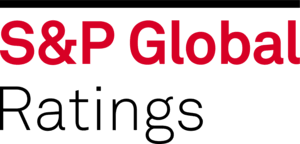 Perhaps the oldest and most robust rating agency in the world, Standard & Poor‘s success is founded on the work of three individuals: Henry Varnum Poor, Charles Dow, and Luther Lee Blake. In 1860, Henry Poor took a shot at publishing an investor’s guide for the then booming U.S. railroad industry. He continued to ingratiate himself in the railroad world, gathering valuable data as commissioner for the Union Pacific Railroad, and published his second guide in 1868 to help investors monitor a railroad company’s performance. And as Poor worked hard on perfecting his railroad analysis, Charles Dow developed the first stock index in 1884. This later became the Dow Jones Industrial Average, the first centralized source for fast financial information. Finally, in 1906, Luther Lee Blake formed the last piece of the puzzle with the Standard Statistics Bureau, which curated financial evaluations on every industry except the railroad.
Perhaps the oldest and most robust rating agency in the world, Standard & Poor‘s success is founded on the work of three individuals: Henry Varnum Poor, Charles Dow, and Luther Lee Blake. In 1860, Henry Poor took a shot at publishing an investor’s guide for the then booming U.S. railroad industry. He continued to ingratiate himself in the railroad world, gathering valuable data as commissioner for the Union Pacific Railroad, and published his second guide in 1868 to help investors monitor a railroad company’s performance. And as Poor worked hard on perfecting his railroad analysis, Charles Dow developed the first stock index in 1884. This later became the Dow Jones Industrial Average, the first centralized source for fast financial information. Finally, in 1906, Luther Lee Blake formed the last piece of the puzzle with the Standard Statistics Bureau, which curated financial evaluations on every industry except the railroad.
The three investment pioneers operated independently from each other, expanding their offerings and outreach, until Standard Statistics and Poor’s Publishing merged in 1941. The remainder of the 20th Century is a storied evolution of expansion and innovation for S&P. With the launch of the S&P 500, the rating agency turned into its own database for live index tracking and became a direct competitor to Dow Jones. That is until 2012, when the companies entered into a joint venture called the Dow Jones Sustainability World Index. The achievements of S&P and Dow Jones collectively is too long to list. Simply put, S&P has become a global resource for determining financial strength for other rating agencies as much as it is for consumers.
How S&P Ratings Work
S&P curates stand-alone credit profiles for insurance companies. These profiles are supported by three tiers: issuer credit rating (ICR), financial strength rating (FSR), and financial enhancement rating (FER). However, in most cases, the FSR and FER are identical to the ICR. So we will focus mainly on ICR methodology. S&P’s ratings are forward-looking opinions of insurer strength. The agency uses five years of a company’s historical data to predict the next two years.
S&P credit ratings range from aa+ to b-. Any insurer graded a ccc+ or below has shown a history of defaulting on credit or is very likely to in the near future. This is one of the rare circumstances where an insurance company’s FSR differs from its ICR. These ratings are formed in three steps. First, agency analysts evaluate the insurance company’s business risk profile and financial risk profile. This includes things like competitive position, country risk, and funding structure. Together, these profile assessments form what is called the anchor. Step two, S&P adds modifiers like liquidity and governance to bring the rated company in-line with its operating environment. Step three is to take this stand-alone credit profile and analyze its support system. Things like reinsurance programs and support from a stronger parent company or government body can add lift to the rated insurer’s analysis.
Unlike other rating agencies, S&P does not display these modifiers visually. Instead they are used to adjust a final rating internally. An important factor to note with S&P is its focus on industry risk. S&P understands that different industries have different financial standards and ways of operating. For example, when assessing a life insurer’s capital and earnings, S&P examines the data at a group-level. This is because risk-sharing arrangements are more common in the life insurance field than in others.
Why Use S&P?
What began as a niche investor’s manual for railroads has turned into one of the most powerful economic institutions of our time. S&P is more than a rating agency, it is an overseer for global health. Constantly seeking ways to push risk analysis to new levels of understanding and develop solutions for greater corporate responsibility, S&P is as innovative as it has ever been. Where other agencies have grown through acquisitions, S&P seeks out partners. And when it comes to life insurance, S&P is a valuable source for nuanced analysis. A high rating from S&P is a mark of confidence that you can rely on when comparing coverage.
Comdex
It’s time to shift gears away from rating agencies and talk about Comdex. Created by Ebix as part of its VitalSigns platform, Comdex is a composite index of an insurance company’s ratings. Ebix began in 1976 as Delphi Information Systems, Inc. Since then, the company has become a technological powerhouse for insurance, finance, and e-commerce analytic tools. And while Ebix offers a diverse product line for life insurers and brokers alike, Comdex is its most important tool for a policyholder.
How Comdex Scores Work
 If you are wondering how to quickly compare an AM Best rating to Moody’s, Comdex is how. A Comdex Score is not itself a rating. It is the average of all ratings an insurer has received and translated into a score of 1 to 100. The reason Comdex is such a vital tool is because there is no easy one-to-one comparison between, say, an A+ from AM Best and an a+ from S&P. The ratings may appear the same, but both agencies look at insurers differently.
If you are wondering how to quickly compare an AM Best rating to Moody’s, Comdex is how. A Comdex Score is not itself a rating. It is the average of all ratings an insurer has received and translated into a score of 1 to 100. The reason Comdex is such a vital tool is because there is no easy one-to-one comparison between, say, an A+ from AM Best and an a+ from S&P. The ratings may appear the same, but both agencies look at insurers differently.
A Comdex Score is best used to summarize all the data and research that ratings agencies dug up for a single insurer. You can see a snapshot of the relationship between rating agencies scores, as well as how each provider stacks up amongst all the data available. As a platform, VitalSigns can draft comparison reports for up to eight insurers at a time. VitalSigns works with 500 insurers, most of which will have its Comdex Score viewable on its website. But if you are interested in seeing more in-depth Comdex reports, then a trusted agent can build a report that fits your needs. Beyond having a helpful average insurer score, Comdex’s most valuable asset is its ratings report. This allows you to see more clearly just exactly how AM Best determines that A+ rating.
Why Use Comdex?
As part of Ebix’s Software-as-a-Service (SaaS) line for data exchange and risk management solutions, Comdex is a useful translation tool for insurance company ratings. The software brings the unique analysis from each rating agency and brings them together to form a complete picture of a providers financial strength. It’s also important to remember that a Comdex Score isn’t just another number to add to your ratings list. With the help of an insurance agent, Comdex can be used to zoom in on key metrics of an insurer or multiple insurers. Compare up to 8 insurance companies with Comdex’s profile and analysis reports, or use the software to highlight specific details like an insurers financial ratings. Comdex is an important tool because it brings the rating agencies together.
It is important to remember that Comdex is not a crystal ball, and no rating agency truly knows what the future holds for a rated insurance company. However, careful research, thoughtful methods, and powerful software are values that should not be ignored. And while insurance ratings and Comdex Scores should by no means be the deciding factor for purchasing life insurance, they are great first-step tools. Insurance ratings not only help you to narrow down which provider to buy from, but who should help you through the process. After all, an agent is only as good as the companies they represent.
Companies We Represent
| Life Insurance Company Ratings | A.M. Best | Fitch | Moody’s | S&P | Comdex |
|---|---|---|---|---|---|
| American General | A (last rated 12/16/2022) | A+ (last rated 02/27/2023) | A2 (last rated 03/29/2022) | A+ (last rated 05/26/2022) | 80 |
| Banner Life | A+ (last rated 11/03/2022) | AA- (last rated 06/22/2022) | A2 Legal & General Group Plc (Parent company) (last rated 10/25/2022) | AA- (last rated 07/12/2022) | 94 |
| Brighthouse | A (last rated 12/16/2022) | A (last rated 12/07/2022) | A3 (last rated 01/13/2022) | A+ (last rated 05/24/2022) | 76 |
| Genworth | C++ (last rated 11/10/2022) | NR | Caa1 (last rated 04/24/2020) | BB- (last rated 02/16/2023) | 32 |
| Lincoln National | A (last rated 11/09/2022) | A+ (last rated 12/09/2022) | A1 (last rated 11/02/2022) | A+ (last rated 01/12/2023) | 90 |
| MassMutual | A++ (last rated 07/08/2022) | AA+ (last rated 12/08/2022) | Aa3 (last rated 01/28/2021) | AA+ (last rated 01/18/2023) | 98 |
| Midland National | A+ (last rated 07/29/2022) | A+ (last rated 12/07/2022) | NR | A+ (last rated 05/26/2022) | 89 |
| Mutual of Omaha | A+ (last rated 02/03/2022) | NR | A1 (last rated 10/27/2020) | A+ (last rated 05/19/2022) | 90 |
| Pacific Life | A+ (last rated 06/24/2022) | AA- (last rated 09/09/2022) | Aa3 (last rated 07/21/2021) | AA- (last rated 02/08/2023) | 95 |
| Penn Mutual | A+ (last rated 03/23/2022) | AA- (last rated 11/15/2022) | Aa3 (last rated 11/02/2020) | A+ (last rated 11/23/2022) | 93 |
| Principal Life | A+ (last rated 03/02/2022) | AA- (last rated 06/30/2022) | A1 (last rated 01/31/2022) | A+ (last rated 04/27/2022) | 90 |
| Protective Life | A+ (last rated 05/18/2022) | AA- (last rated 07/14/2022) | A1 (last rated 10/23/2020) | AA- (last rated 04/19/2022) | 94 |
| Prudential Life | A+ (last rated 12/15/2022) | AA- (last rated 12/16/2022) | Aa3 (last rated 11/22/2021) | AA- (last rated 11/29/2022) | 94 |
| ReliaStar | A (last rated 02/08/2023) | A (last rated 10/07/2022) | A2 (last rated 06/10/2021) | A+ (last rated 06/28/2022) | 78 |
| Transamerica | A (last rated 11/03/2022) | NR | A1 (last rated 04/05/2022) | A+ (last rated 02/22/2023) | 81 |
Beyond The Rating
So now you know where to find life insurance ratings and how they work. But what comes next? A high rating from AM Best or Moody’s is a vote of confidence for one key piece of the life insurance process: claims-paying ability. While a paid claim is the ultimate result anyone purchasing life insurance is after, it is important to remember that insurance is not only a long-term investment but a long-term relationship with the company you choose. A financially strong insurance company means very little if it can’t meet your needs. Use life insurance ratings to narrow your search, but consider the following to help you make the right choice.
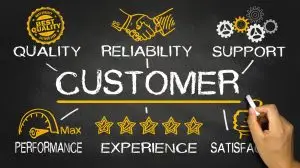 Customer Satisfaction
Customer Satisfaction- Products Offered
- Cost Comparison
The insurance landscape is ever-changing, and keeping up with it all takes a lot of time. Luckily, we’re all about saving you time and money: Top 10 Life Insurance Companies In 2023
Customer Satisfaction
An AAA insurance company may be excellent at managing its money, but that doesn’t mean it offers AAA customer service. Short wait times and professional call centers have very little to do with a company’s ability to pay your claim despite how much they mean to you as a policyholder. Life insurance isn’t rocket science, but it is a complex beast. It is vital for policyholders to have their questions answered quickly and, most importantly, correctly. How do I pay my premium? What happens at the end of my term insurance? What is a Premium Endorsement Rider, and why am I just now finding out that I have it? These are just a few examples of questions a policyholder may need answered – and answered fast.
Look to your peers, family members, and advisors for insurance company recommendations. Ask about how their application experience was and if they got the rate they wanted. You can also take advantage of resources from the National Association of Insurance Commissioners (NAIC) and J.D. Power. NAIC maintains a database of consumer insurance reports and rates each company based on a Company Complaint Index score. Meanwhile, J.D. Power compiles annual individual life insurance studies that grade companies based on five customer-focused categories: price, products, communication, interaction, and statements.
Products Offered
On the surface, it appears that most life insurance companies offer the same types of products. Term life and permanent life insurance are the two most common products offered, and both share general consistencies across the industry. Even so, every life insurance company has its niche. The key is to find out what insurer’s niche is your need. For instance, all Banner Life term policies are convertible. If you are worried about future health risks due to your hereditary or working environment, a convertible term policy could protect you from becoming uninsurable in the future.
Each insurance company can vary in term lengths, some offering 1-year failure to survive policies and others going as high as 40 years of guaranteed premiums. Furthermore, permanent life policies, like universal life and whole life, will range in flexibility and benefits. For instance, when you buy permanent life insurance through a mutual life insurance company, a portion of the company’s revenue will be added to your policy’s cash value.
Finally, products should not be limited only to what you can buy, but how you can buy. Underwriting technology and advancements in health monitoring are behind-the-scenes product offerings. If you are young, in good health, and want to bypass the often long approval process, then an insurance company with an accelerated underwriting option may be a good fit for you. For example, Penn Mutual’s ACE program is an AI-backed application option that could have you approved in days rather than weeks. There are even companies, like John Hancock, that will offer a discount on your premium if you wear a Fitbit while you exercise.
Cost Comparison
Life insurance is an intimate investment. Two business partners walk into Pacific Life and walk out with a 20-year key person term policy apiece. They are both the same age and gender, have relatively the same build, and make the same amount of money. Yet one is paying double in premiums. Why? Because the one paying double had a DUI three years prior. This is where life insurance differs from other types of insurance. Getting insured at the best rates is not just about health and wealth. It is also about past decisions.
The cost of insurance will depend on the company and its specialized exceptions. To continue with Pacific Life as the example, it may offer more leniency and, thus, a better rate to someone with sleep apnea than other providers. On the other hand, someone with a history of cancer is better looking at a company like Mutual of Omaha that offers cancer insurance.
Most insurance companies offer free quotes that make cost comparison a little easier, but your best bet at getting the best rate possible is working with an expert advisor.
trusted by 5,000+ clients
Get Personalized Quotes Tailored to Your Company’s Needs
What Happens Next?
Now that you understand the fundamentals of insurance ratings and the other key factors for choosing the right life insurance, what is the next step? Well, you’re already here. Why not get an instant quote from us and a free consultation? We know the landscape. Even though we haven’t met yet, we know how to get you the best rate because we’ve seen it all before. The insurance companies we use have never failed to pay a valid claim, and we have personally helped over 2,000 claims get paid in our thirty years of doing business.
The first step to choosing the best insurance is knowing where to look by using insurance rating agencies and consumer reviews. After that, it’s all about honesty, integrity, and, above all, knowing what you need.
Frequently Asked Questions about Complete Ratings Guide For Life Insurance Companies
What is a Life Insurance Company?
A life insurance company is a financial institution that issues policies designed to pay a designated beneficiary a sum of money upon the death of the insured person. These companies assess risk, collect premiums, and manage investment portfolios to ensure they can meet future claims.
Who is the Best Life Insurance Company?
The best life insurance company depends on individual needs, but providers like MassMutual, Pacific Life, and Penn Mutual consistently rank highly for financial strength, customer satisfaction, and product flexibility.
Which Life Insurance Provider is Best?
There is no single best provider for everyone, but companies with strong ratings are often considered top choices.
What is the Highest Rating for a Life Insurance Company?
The highest rating typically awarded by major rating agencies is A++ by AM Best, AAA by Fitch and S&P, and AAA by Moody’s, signifying superior financial strength and claims-paying ability.
Conclusion and Summary of Complete Ratings Guide For Life Insurance Companies
Some people prioritize lifetime coverage through permanent life insurance policies, while others seek more affordable term plans from leading term life insurance companies. If you’re unsure how to balance everyday expenses, utility bills, and future obligations like college tuition or charitable donations, speaking with a financial advisor or a professional offering investment advisory services can help you weigh the pros and cons of each life insurance option.
Permanent policy options, such as a whole life insurance policy or universal policies, often come with the added benefit of cash value accumulation over your entire life. Meanwhile, a term plan might be better for those seeking straightforward financial protection for a set number of years. For those eligible policyholders seeking variable universal coverage or indexed universal strategies, these products may also serve broader financial decisions under the guidance of a financial professional.
Ultimately, there is no one-size-fits-all solution. Your choice of insurance products should reflect your specific goals, whether that’s to secure financial security for loved ones, plan for a lump sum legacy, or support long-term needs with lifetime coverage. Use ratings as your foundation, but work with a trusted advisor to build a life insurance plan that supports your financial protection goals today and into the future.












